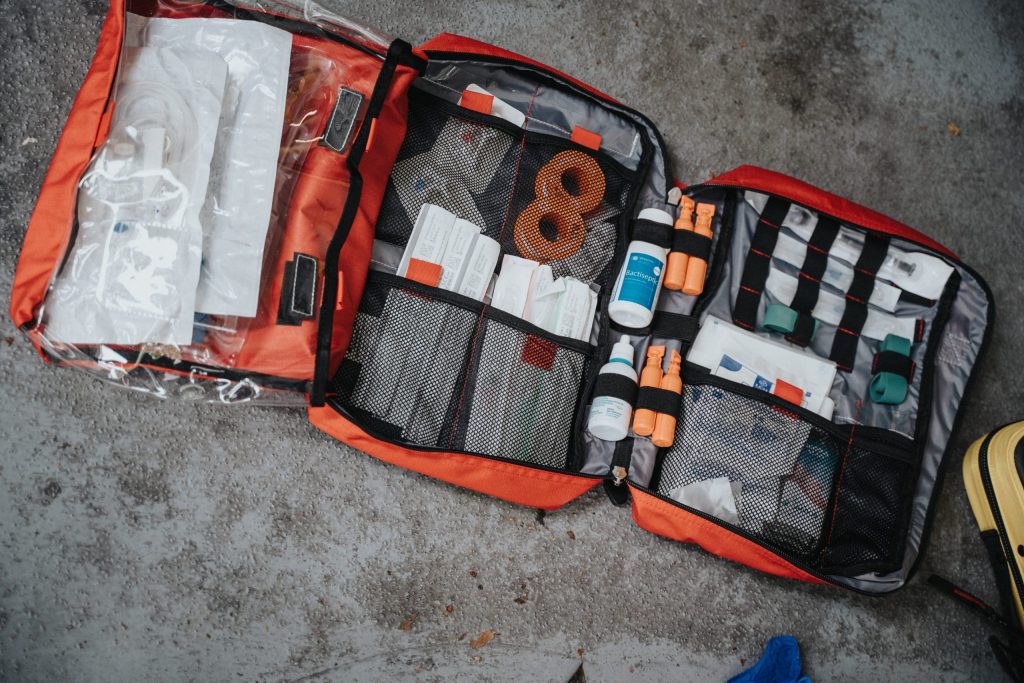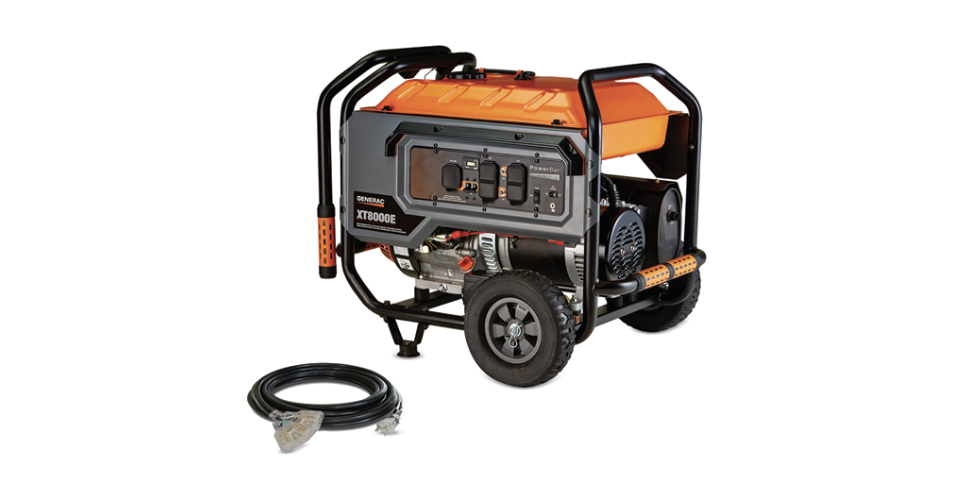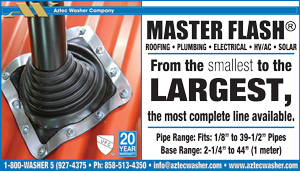By Gary Auman NFBA Legal Counsel
The requirement that companies engaged in construction work have an emergency action plan is not recognized by many post-frame contractors, but it definitely applies to the work that we do. This Occupational Safety and Health Administration requirement is found in Section 1926.35 of the Code of Federal Regulations.
Many employers in our industry and in other construction industries feel that an EAP is supposed to address how to handle an industry accident, but this is not correct. An EAP is supposed to provide guidance for employees for the handling of emergencies that may occur on a construction site. The types of emergencies of concern are those that arise from either natural or human causes. Examples of covered emergency situations include, but are not limited to, tornadoes, hurricanes, severe straight-line winds, significant snowfalls, ice storms, fires, chemical spills, and toxic fumes. In our industry most emergency situations have natural causes. However, as companies move more into commercial and industrial construction, emergencies caused by human actions are becoming more likely.
Your EAP must clearly set out actions to be taken in response to an emergency. If you choose to include in your plan situations involving the provision of first aid for injuries or other medical conditions, such situations must be clearly identified, and the instructions should not impede the ability of employees to determine actions that need to be taken to respond to an emergency. I suggest that you create a site-specific EAP for each job site, with an outline of what you require. A copy of the site-specific EAP should be at the site before any work there begins.
Section 1926.35 lists the necessary components of each EAP:

identification of emergency escape procedures and escape route assignments. (If the selection of an emergency escape route may be determined by the type or location of the emergency, you will need to identify all potential routes and the method for making the selection.)
procedures to be followed by any employees who remain behind to perform required operations or to shut down equipment after the initial evacuation
procedures to account for all employees after the emergency evacuation
rescue and medical duties for any employees who have such duties
the preferred means of reporting emergencies
names and job titles of individuals who may be contacted for information.
In addition, you are required to establish an alarm system and to advise employees on the job site about the alarm system to be employed. If different situations call for different types of evacuations, your plan should identify which type of evacuation will be used for each type of emergency. Your site-specific plan should identify the employee or employees on the site who are responsible for declaring an emergency, identifying the evacuation route and sounding the alarm. Finally, you are required to review the EAP for the site with all employees who will work on the site before they begin work there. A review with each employee is also required whenever changes are made to the plan.
If you choose to add emergencies involving medical treatment to your EAP, you will need to identify them in such a way that they will not lead to confusion with emergency evacuation or response procedures required by the OSHA standard.
Section 1926.50 sets out the requirements for providing medical care for employees on each job site. If your EAP addresses medical situations, you should identify the location for the first aid kit on the site. You should also establish a protocol for dealing with injuries that occur on the site. This can extend from applying a bandage to calling the emergency squad. All employees on the site should be trained in these procedures. I suggest that the EAP also require the site supervisor to check the first aid kit periodically to ensure that it contains adequate supplies. The name of the first aid provider for the site should be listed, along with telephone numbers and locations for local hospitals, urgent care facilities and doctors’ offices. Telephone numbers for emergency medical technicians and fire stations should also be listed. You should identify as specifically as possible the job-site location, with the instruction that the person calling for an emergency squad give the site location (this is especially important if the person making the call is using a cell phone with an area code different from the area code of the site). Identify the person on the site who is to call in a request for emergency medical care.
I suggest that the site-specific EAP be posted in several locations on the job site. The plan must be reviewed with any employee assigned to the site, even if the person arrives at the site several days after the project has begun. I also suggest that you date the plan and list the site’s name (if it has one) and specific location.
Hazard-Recognition Training
Hazard-recognition training is overlooked by many contractors, but violations of this requirement are being cited with increasing frequency by OSHA during compliance inspections—whether an injury has occurred or not. It is central to your safety training program.

Title 29 CFR Section 1926.21(b)(2) establishes the requirement for hazard-recognition training:
“The employer shall instruct each employee in the recognition and avoidance of unsafe conditions and the regulations applicable to his work environment to control or eliminate any hazard or other exposure to illness or injury.”
The standard does not give the employer much direction. The direction to “instruct each employee in the recognition and avoidance of unsafe conditions” seems to recognize that, like OSHA, employers will not be able to cover every possible hazard that may arise on a job site. So OSHA tasks employers with the responsibility of getting that point across to their employees.
I offer one example. One of my clients was cited by OSHA for failing to train employees in hazard recognition after an employee’s finger was amputated by a large exhaust fan. The injured employee had been assigned to dismantle a scaffold along a wall. In order to perform his job, the employee was required to come close to a large exhaust fan located on the wall about 20 feet above the floor. Because of its location, the fan did not have to be guarded. OSHA took the position that the employee should have been trained to recognize or suspect that the fan posed a potential hazard and that if he had been properly trained, he would have investigated to see whether the fan was locked. The employee failed to do so. While he was working next to the fan, with his hand near the fan blades, the fan started up (it was controlled by a thermostat), and he lost a finger.
Employees who have received adequate hazard-recognition training are aware of their surroundings and of potential hazards. A job that they may have done a hundred times, such as dismantling a scaffold, becomes more hazardous because of the scaffold’s location. Employees should be trained to consider their entire working environment at the beginning of each project and again as their location on the work site changes and as new tasks, employees or contractors are added. They should also be trained to pay attention to what their fellow employees are doing at all times, especially if it can affect their safety. Instruction should extend to telling employees about the steps they should take whenever they observe what they believe to be a hazard. In the example above, the employee, having noted the presence of the fan, should have brought it to the attention of his supervisor. The supervisor, now aware that the assignment given to the employee would bring the employee close to the fan, should have determined whether the fan was operational and then taken steps to see that it was locked. One simple question could have prevented the loss of a finger for the employee and an OSHA citation and penalty for the employer.
Bloodborne Pathogens
The discussion of the EAP brings to mind OSHA’s standard on bloodborne pathogens, infectious microorganisms in human blood that can cause disease in humans. These pathogens include, but are not limited to, hepatitis B, hepatitis C and human immunodeficiency virus. The standard on bloodborne pathogens is found in 29 CFR Section 1926.1030. This part of the OSHA standards applies only to general industry and not to construction. In a letter dated March 23, 1993, Roger A. Clark, director of compliance programs for OSHA, explained this fact to the National Electrical Contractors Association. OSHA had made a decision not to try to enforce the standard on bloodborne pathogens in the construction industry because that industry had not been able to participate in the rule-making process that finalized the standard for general industry. But Clark also stated that OSHA could choose to enforce the bloodborne pathogens standard against construction contractors under the general-duty clause and that requirements in the construction industry standards touch on bloodborne pathogens. In this connection he mentioned the standard in CFR 1926.25 requiring that containers be provided for hazardous waste. Because the process for handling bloodborne pathogens in the construction industry is not very straightforward, I will cover this topic in more detail in the next issue of Frame Building News.
Gary Auman of Auman Mahan and Furry is legal counsel for the National Frame Building Association. He can be reached at [email protected].























